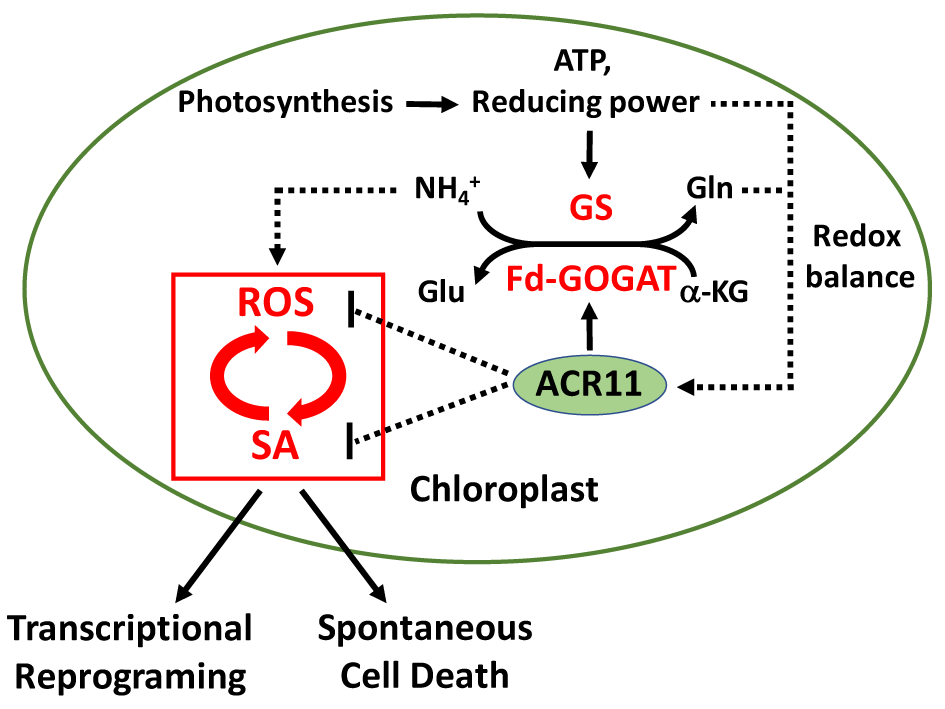[Ming-Hsiun Hsieh] ACR11 may function as a putative glutamine sensor in Arabidopsis
POST:Fig. 1 A working model of ACR11 function in modulating ROS production and SA-associated defense responses.
Dr. Ming-Hsiun Hsieh’s laboratory reported that ACR11 may function as a putative glutamine sensor in Arabidopsis (Singh et al., 2018, Sci Rep 8: 11851). The ACR11 protein contains two ACT domain repeats. Dr. Hsieh’s group characterized two independent acr11 mutants in Arabidopsis. The acr11 mutants have a lesion-mimic phenotype accompanied by increased levels of reactive oxygen species (ROS) and salicylic acid (SA)-associated defense responses. Based on their study and the literature, Dr. Hsieh’s group proposed that ACR11 may play an important role in the interconnections of glutamine homeostasis, GS/Fd-GOGAT cycle, redox balance, ROS accumulation, and SA-associated defense responses in Arabidopsis (Fig. 1). Contributors of this work include: Shashi Kant Singh, Tzu-Ying Sung, Tsui-Yun Chung, Shao-Yu Lin, Sang-Chu Lin, Jo-Chien Liao and Wei-Yu Hsieh.
